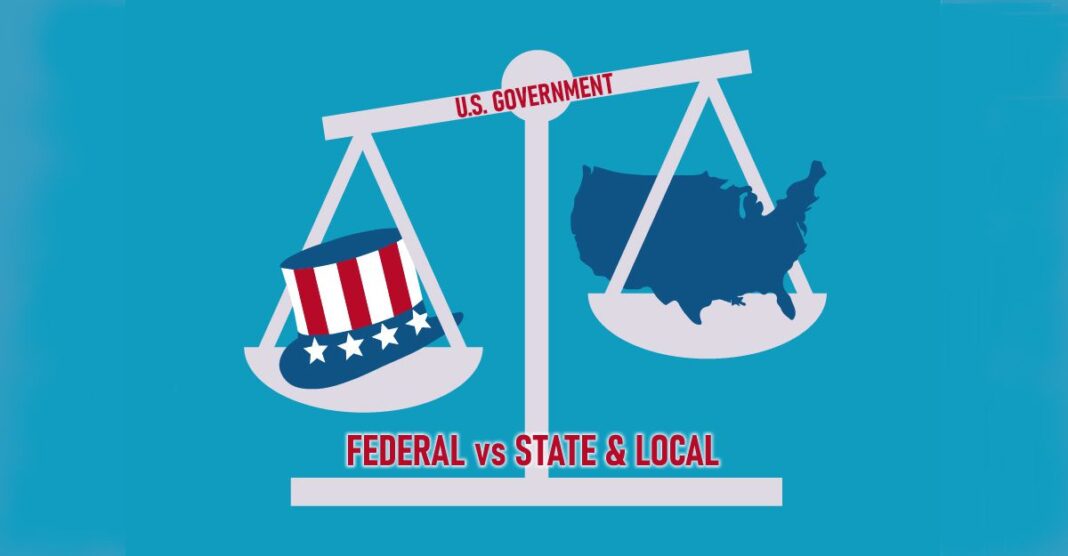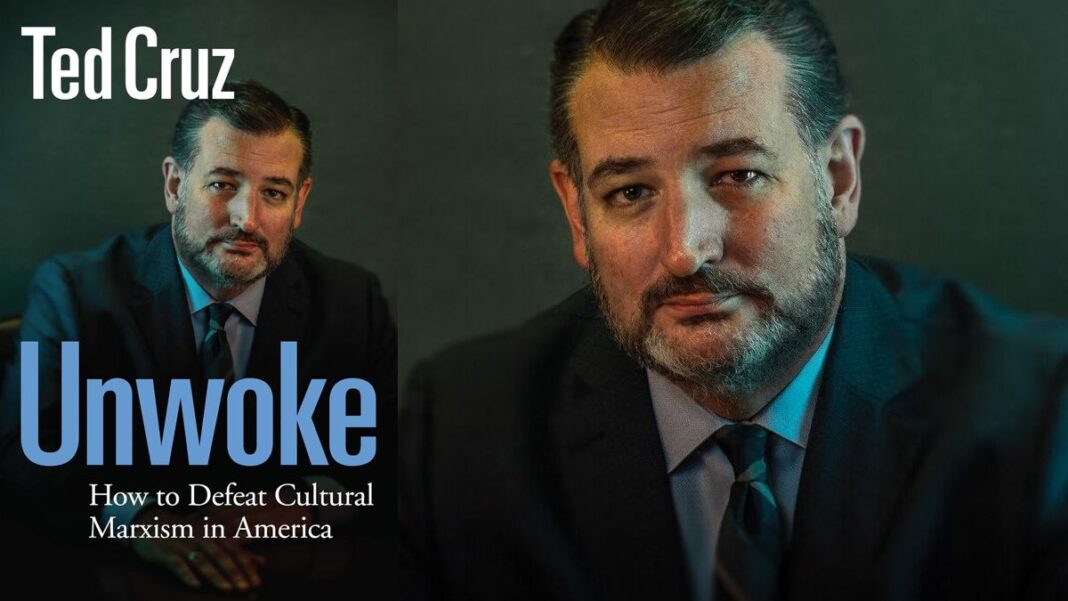Part 2: Series on Devolving Power to the States
Read Part 1: A Federal Gov’t Too Big to Govern: Devolve Power to States
Read Part 3: Enacting Devolution of Federal Power to the States
As the spending minuet plays out between the House and Senate over appropriations, supplemental spending for wars, and government shutdowns, a wall of debt is being built around the Congress. With an estimated $45 trillion national debt by 2030 and interest payments exceeding a trillion a year, reality will force our lawmakers to stop spending. One of their first cuts will be to reduce and eventually eliminate the $1.2 trillion Congress gives to states as a bribe to operate federal programs that the federal government, many times, has no authority to operate. This occurrence will be the beginning of the devolution of power to the states.
How did the federal and state governments get into this bind? More importantly, how do they get out of debt?
The answer is clear, if it’s constitutional to increase federal power, it must also be constitutional to decrease it. This flexibility allows the federal government to return to the states the powers taken from them over the past eighty years. Devolution of power will be the lynchpin that keeps a de facto bankrupt Union together.
The growth of the federal government has been the only unifying ambition of Congress, presidents, and the courts since the dawn of the Republic.
The expansion of federal power started with Chief Justice Marshall’s 1819 decision in McCulloch v. Maryland. Marshall not only solidified all the federal government’s enumerated powers; he broadly applied the ‘necessary and proper clause’ to establish sweeping implied and incidental federal powers. He indicated no phrase in the Constitution limits the use of these implied powers.
His decisions elevated the Supreme Court to being the final arbiter of constitutional issues. By skillfully combining the Constitution’s enumerated powers with its implied powers, Marshall designed a governing structure with few limits on federal power short of a revolution.
While the Supreme Court approved the accumulation of massive federal power early in the Republic, it took until the 1940s for the court to erase the Tenth Amendment and state powers from the Constitution.
The demise of the Tenth Amendment arose when the Department of Labor sought to regulate local wages. States argued wage regulation was not an enumerated federal power in the Constitution. Therefore, such power rested with the states. Unfortunately for the states, a unanimous Supreme Court in United States v Darby (1941) held the Tenth Amendment was merely a “truism” since the substance needs to be determined by what powers are delegated to the federal government from any part of the Constitution. In Darby, the court held the federal government has the constitutional authority to regulate local wages under the Commerce Clause.
The ever-expanding Commerce Clause.
Using its expansive interpretation of the Commerce Clause, the Supreme Court sanctioned the massive growth of what has become the Administrative State. It transformed a country that practiced federalism (a system of governance in which two levels of government control the same territory) into a nation of federal rule. Over eighty years, Congress enacted thousands of laws and over 200,000 regulations that reach almost every activity and product in the nation.
Between 1937 and 1995, the Supreme Court did not strike down a single law expanding federal power. In 1995, it finally struck down a congressional enactment involving gun possession in a schoolyard and another case involving violence against women, finding both to be intrastate, not interstate, commerce. After minimally limiting federal power, the Supreme Court returned to rubber-stamping all future congressional enactments.
Gaps in federal power over states were filled by bribing states to pursue national priorities.
A Brookings study on state budgets noted, “In 1900, states and localities raised $1.75 for every $1 of federal revenue. They performed all government activities except national defense, foreign relations, [federal] court proceedings, and postal services.” While the federal government made grants to the states in this period, those grants generally subsidized existing state programs.
Since the Great Depression, Congress enacted many new social programs, some of which it did not have the constitutional authority to implement. To overcome its constitutional limits, Congress raised federal taxes to generate sufficient funds to make grants to states to incentivize them to implement federal wishes. By 1960, there were 132 state grant programs. Today, federal grant programs range between 1,000 to 1,300. In 2021, these grant programs cost the federal government $1.2 trillion annually. The federal government taxes the American public to pay for the grants it makes to the states to have federal wishes implemented.
According to the Bureau of Census, federal grants to states in FY 2020 represent 35.9% of state revenues. While states accept these grants, they come with federal handcuffs. Compliance with many federal mandates often distorts state priorities by displacing local programs that may be more significant to the state’s citizens than the federal programs. Receipt of federal funds can require states to provide matching funds, comply with federal regulatory mandates, and increase personnel for program management.
States are beginning to resist oppressive federal regulation.
More than a few states are now resisting implementing federal programs they do not want to administer or are not being fairly compensated for managing.
State frustration with implementing federal programs started with the conflict over sanctuary states and cities during the Trump administration. Over three hundred states and cities refused to enforce federal immigration laws even though they accepted federal grant monies for law enforcement associated with these programs.
The federal-state conflict, however, is over more than Sanctuary cities. Twenty-three states and the District of Columbia have legalized marijuana, notwithstanding it is illegal under federal law.
Additionally, some federal programs only cover a fraction of the implementation cost. States implement approximately 96% of federally delegated environmental programs but only receive 28% of the cost of implementation. At some point, states will refuse to implement the unwanted or underfunded federal programs, or the feds will increase state funding. Making this decision will depend on the financial situation of the federal government.
Federal deficits will be the catalyst to stop state funding.
Complicating state dissatisfaction with the federal grant programs is the federal government’s financial mess.
The federal government’s interest payments for FY 2022 are $475 billion. CBO projects that net interest costs could total $640 billion in 2023 and soar to $1.4 trillion in 2033. The combination of increasing national debt and soaring interest payments on the debt will cause interest payments alone to exceed the total amount of all grants made to states. The federal government will need to find hundreds of billions of dollars annually to service the increased debt, or it will need to find budget reductions, such as state program grants, to remain in the same financial position as today.
The conflicting trends of states not wanting to implement specific federal programs and the federal government not having sufficient money to fully compensate the states for implementing its programs will start the debate over which federal programs should be administered and by whom.
The federal government’s inability to fund state programs will be the catalyst that drives the states to eliminate the implementation of those programs and spark more freedom to implement programs sought by their citizens. Hence, devolution of power will begin.
William L. Kovacs has served as senior vice president for the U.S. Chamber of Commerce, chief counsel to a congressional committee, and a partner in law D.C. law firms. His book Reform the Kakistocracy is the winner of the 2021 Independent Press Award for Political/Social Change. He can be contacted at wlk@ReformTheKakistocracy.com






